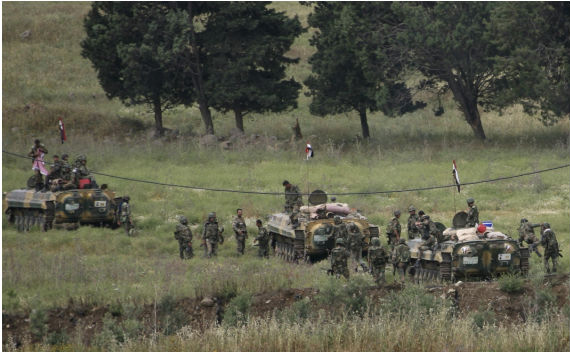Syria’s Conflict Enters a More Dangerous Phase
More on:

Today’s Arab League decision to suspend Syria from the organization and impose economic sanctions if the violence against Syrian citizens does not end within three days is a huge blow to Syria’s standing and self-image as the vanguard of Arab nationalism. Assad refused to even send a delegate to Rabat, preferring instead to boycott the forum. Indeed, Assad has met the Arab League’s calls to ratchet down the repression with defiance. Monday marked what al-Jazeera has dubbed Syria’s “bloodiest day,” with at least seventy people killed across the country. This is in line with my prediction from my last post that the period ahead will be even more brutal and violent than ever. Assad cannot accept the terms of the Arab League agreement as he knows no other way to maintain his iron-fisted rule than by digging in and cracking down with ever-increasing brutality.
Rather than represent Arab resistance, Assad now stands as the target of resistance. Today’s attacks by the Free Syrian Army (FSA) is a dramatic escalation by the opposition. Soldiers who had defected from the Syrian army attacked military facilities in multiple locations throughout the country. Such actions make the military look weak and vulnerable, and may give encouragement to further military defections. The rebel Free Syrian Army also announced today the creation of a temporary military council with the aim of ousting the regime of President Assad and protecting civilians from his forces. We are clearly witnessing the militarization of the conflict that so many observers have feared. It will surely trigger a brutal response by the regime and many more deaths.
Amidst all this activity, the EU adopted measures yesterday that are extremely significant. It announced sanctions against an additional eighteen figures including a militia chief, the commander of Syria’s special forces, a number of generals and a lawyer who is close with the regime. This means there are now seventy-four people specifically targeted by the EU’s sanctions. As I discuss in the CFR.org video posted below, these targeted sanctions are exactly the kind of steps the international community should be taking to incentivize more people to break from the Assad regime.
The situation is violent and inherently dangerous. With Syria increasingly isolated, there is greater potential for Syria to lash out not only within the country, but directly or through proxies against targets in neighboring Lebanon, Iraq, Turkey, and Israel. But Syria’s isolation also means that new opportunities have opened up for American and international leadership to help advance the effort to bring about Assad’s departure. My video identifies some things that Washington and the international community can do to help accelerate that.
To watch the video on YouTube, please click here.
More on:
 Online Store
Online Store
